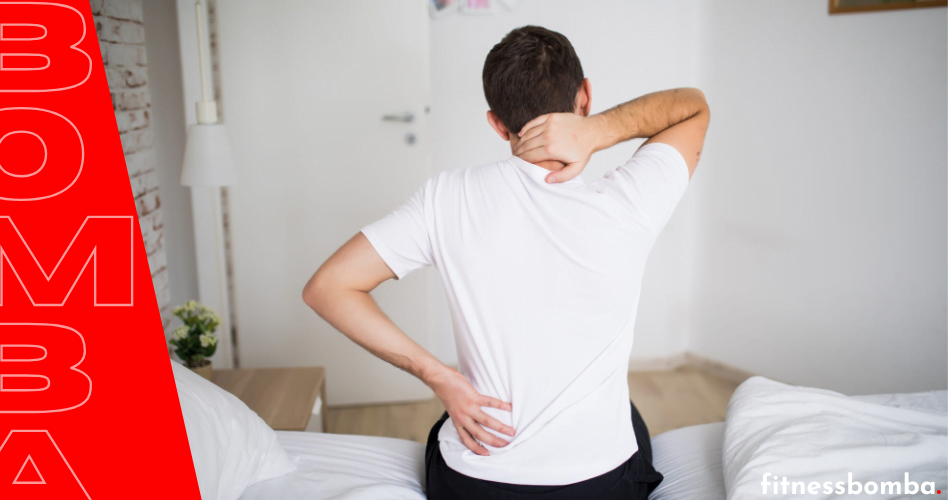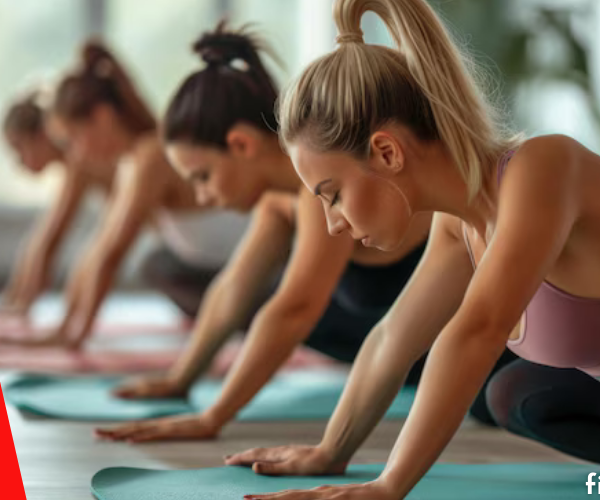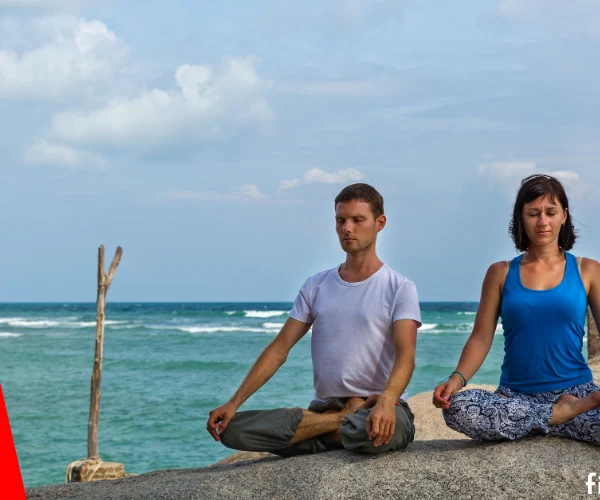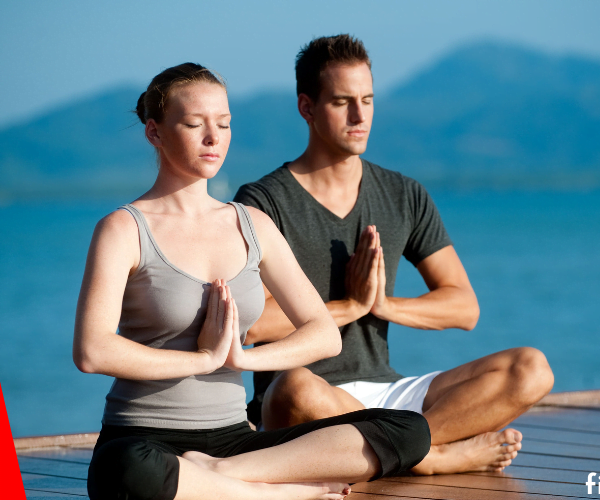Back pain is a widespread issue that affects millions of individuals worldwide, often causing discomfort, limited mobility, and a significant impact on one’s overall quality of life. However, there is a natural and effective solution that can provide much-needed relief – yoga. This article will explore three gentle yoga poses that can help alleviate back pain and promote healing.
The yoga poses featured in this article are designed to target the spine, core, and surrounding muscle groups, offering both physical and mental benefits. Readers will learn how to properly perform each pose and discover modifications for different back conditions, such as herniated discs or sciatica. By incorporating these yoga poses into a regular practice, individuals can experience reduced pain, improved flexibility, and enhanced overall wellbeing.
Whether you’re struggling with acute, chronic, or radiating back pain, this article will provide you with the tools and knowledge necessary to find relief and regain control of your physical and mental health through the transformative power of yoga.
Table of Contents
Key Takeaways
- Yoga can be a powerful tool for alleviating back pain and promoting healing.
- The featured yoga poses target the spine, core, and surrounding muscle groups to provide both physical and mental benefits.
- Readers will learn proper technique and modifications for different back conditions, such as herniated discs or sciatica.
- Incorporating these yoga poses into a regular practice can lead to reduced pain, improved flexibility, and enhanced overall wellbeing.
- By understanding the root causes of back pain and the benefits of yoga, individuals can take proactive steps towards managing and relieving their discomfort.
Understanding Back Pain and Its Causes
Back pain is a prevalent issue that affects millions of individuals worldwide. Whether it’s a sharp, piercing sensation or a dull, persistent ache, back pain can significantly impact one’s quality of life. To effectively manage and alleviate back pain, it’s crucial to understand the different types, common causes, and the importance of addressing this condition.
Types of Back Pain
Back pain can manifest in various forms, ranging from acute to chronic. Acute back pain is typically sudden, intense, and often resolves within a few weeks. Chronic back pain, on the other hand, is a persistent condition that can last for months or even years. Additionally, some individuals may experience radiating pain, which can extend from the back down to the legs, a symptom often associated with conditions like sciatica.
Common Causes of Back Pain
Back pain can be attributed to a variety of factors, including poor posture, injury, underlying medical conditions, and age. Improper spinal alignment, caused by activities like prolonged sitting or heavy lifting, can lead to muscle strain and inflammation. Traumatic injuries, such as a fall or car accident, can also cause back pain by damaging the vertebrae, discs, or surrounding tissues. Certain medical conditions, like herniated discs, spinal stenosis, or osteoarthritis, can contribute to chronic back pain. As individuals age, the spine and its supporting structures may weaken, increasing the risk of back pain.
Importance of Addressing Back Pain
Addressing back pain is essential, as it can significantly impact an individual’s overall well-being. When left unattended, back pain can worsen over time, leading to decreased mobility, impaired physical function, and reduced quality of life. Additionally, ongoing back pain can contribute to mental health issues, such as depression and anxiety. By understanding the root causes of back pain and seeking appropriate treatment, individuals can take proactive steps to manage their condition and improve their overall physical and mental health.
By gaining a deeper understanding of back pain, readers can better appreciate the importance of incorporating yoga and other therapeutic interventions into their overall health and wellness regimen. Through a comprehensive approach to addressing the underlying causes of back pain, individuals can find relief and improve their overall quality of life.
Yoga Poses for Back Pain
Yoga can be a powerful tool in managing and alleviating back pain, as it combines gentle movements, stretching, and mindfulness to promote both physical and mental wellbeing. By incorporating yoga poses into a regular routine, individuals can experience reduced pain, improved posture, and enhanced mobility.
Benefits of Yoga for Back Pain Relief
The practice of yoga focuses on spine alignment, core strengthening, and muscle flexibility – all of which are crucial for addressing back pain. Regular yoga sessions can help to elongate the spine, release tension, and improve overall flexibility, leading to a reduction in discomfort and an enhancement in overall physical function.
Gentle Backbends and Spinal Decompression Techniques
One of the key benefits of yoga for back pain relief is the incorporation of gentle backbends and spinal decompression techniques. These poses work to gently stretch and lengthen the spine, relieving pressure on the discs and promoting better spinal alignment. Poses such as Child’s Pose, Cat-Cow, and Downward-Facing Dog are particularly effective in this regard, as they encourage a smooth, fluid movement of the spine while also engaging the core muscles to provide stability and support.
By listening to their body’s needs and modifying poses as necessary, individuals can ensure a safe and effective yoga practice that helps to alleviate their back pain, improve flexibility, and enhance overall well-being.
Child’s Pose: A Restorative Yoga Pose

The Child’s Pose is a gentle, restorative yoga pose that can be particularly beneficial for individuals experiencing back pain. This calming posture helps to release tension in the back, hips, and shoulders, promoting a sense of relaxation and rejuvenation. By incorporating the Child’s Pose into their yoga practice, individuals can find relief from various types of back pain, including those associated with herniated discs or sciatica.
How to Perform Child’s Pose
To perform the Child’s Pose, start by kneeling on the floor with your knees hip-width apart and your big toes touching. Slowly fold forward, allowing your torso to rest between your thighs. Extend your arms out in front of you, keeping your palms on the floor. Breathe deeply and allow your body to sink into the pose, feeling the gentle stretch along your spine and the release of tension in your back, shoulders, and hips.
Modifications for Different Back Conditions
For individuals with herniated discs or sciatica, it is important to make modifications to the Child’s Pose to ensure a comfortable and safe practice. One option is to use a yoga block or bolster placed between your thighs to support your torso, reducing the stretch on the spine. Alternatively, you can separate your knees slightly wider than hip-width, creating more space for your abdomen to rest. Additionally, you can experiment with different arm positions, such as keeping your arms by your sides or resting them on your thighs, to find the most comfortable variation.
Remember to listen to your body and make any necessary adjustments to the Child’s Pose to ensure a relaxing and restorative experience. By incorporating this versatile yoga pose into your routine, you can experience the benefits of spine alignment, lower back exercises, and gentle backbends, all of which can contribute to yoga therapy for back pain and overall spinal health.
Cat-Cow Pose: Gentle Spinal Mobility

One of the most gentle yet effective yoga poses for alleviating back pain is the Cat-Cow Pose. This flowing, rhythmic movement helps to improve spinal mobility, release tension in the back and shoulders, and promote overall flexibility.
Step-by-Step Instructions for Cat-Cow Pose
To perform the Cat-Cow Pose, start on your hands and knees in a tabletop position. Ensure that your wrists are directly under your shoulders and your knees are hip-width apart. As you inhale, gently arch your back, lifting your chest and tailbone towards the ceiling, creating a backbend or gentle backbend. This is the Cow Pose. As you exhale, round your spine, tucking your chin and tailbone, creating a spinal decompression or spinal flexion. This is the Cat Pose. Continue to move fluidly between these two positions, synchronizing your breath with the movement.
Variations for Different Levels of Flexibility
For individuals with limited spine alignment or lower back exercises, you can modify the Cat-Cow Pose by keeping your knees wider than hip-width apart, which can provide more stability and support. Additionally, you can incorporate restorative yoga sequence or yoga therapy for back pain by holding the Cat or Cow Pose for a few breaths before transitioning to the next position.
By regularly practicing the Cat-Cow Pose, you can experience increased range of motion in the spine, reduced muscle tension, and improved overall posture. Remember to listen to your body and make any necessary adjustments to ensure a safe and comfortable yoga for herniated disc or sciatica relief poses experience.
Yoga Poses for Back Pain
Downward-Facing Dog: A Classic Back-Stretching Pose
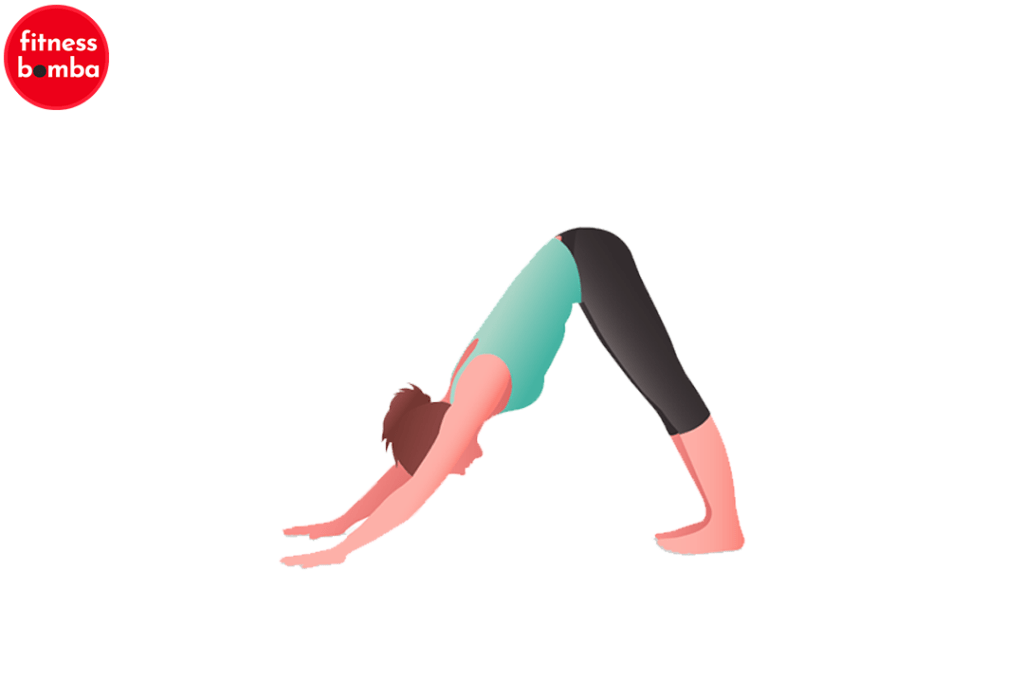
The Downward-Facing Dog Pose, or Adho Mukha Svanasana, is a staple in the world of yoga and can be particularly beneficial for individuals experiencing back pain. This pose provides a gentle yet effective stretch for the back, hamstrings, and calves, while also engaging the core muscles to support the spine.
To perform the Downward-Facing Dog Pose, start on your hands and knees, with your hands shoulder-width apart and your knees hip-width apart. Tuck your toes under and lift your hips up and back, creating an inverted “V” shape with your body. Gently press your heels toward the floor, while keeping your back straight and your head in line with your spine. Hold this pose for several breaths, focusing on your breath and the stretch in your back and legs.
Modifications for Herniated Discs or Sciatica
For individuals with herniated discs or sciatica, the Downward-Facing Dog Pose can be modified to provide a more comfortable and supportive experience. One option is to bend your knees slightly, allowing your hips to move closer to your heels and reducing the stretch in the hamstrings. You can also try placing a block or folded blanket under your heels to support the calves and reduce tension in the lower back. Remember to listen to your body and make adjustments as needed to ensure a safe and effective practice.
FAQ
What are the benefits of yoga for back pain relief?
Yoga can be a powerful tool in managing and alleviating back pain. The gentle movements, stretching, and mindfulness practices associated with yoga can help to promote both physical and mental wellbeing. Yoga poses can help to elongate the spine, release tension, and improve overall flexibility, leading to reduced pain and enhanced mobility.
What are some gentle backbends and spinal decompression techniques in yoga?
Gentle backbends and spinal decompression techniques in yoga can be particularly beneficial for back pain relief. Poses like Child’s Pose, Cat-Cow, and Downward-Facing Dog can help to gently stretch and decompress the spine, release muscle tension, and improve overall spinal mobility.
How can I properly perform the Child’s Pose?
To perform the Child’s Pose, start by kneeling on the floor with your knees hip-width apart and your big toes touching. Exhale as you fold forward, bringing your torso between your thighs and your forehead to the floor. You can extend your arms forward or keep them alongside your body, depending on your comfort level. Breathe deeply and hold the pose for as long as needed, focusing on releasing any tension in your back, hips, and shoulders.
How can I modify the Cat-Cow Pose for different levels of flexibility?
To modify the Cat-Cow Pose, you can try variations based on your level of flexibility. For those with limited mobility, you can perform the pose while seated or in a chair, focusing on the spinal movement without the full range of motion. For those with more flexibility, you can try extending the arm and leg opposites during the Cow Pose to challenge the core and back muscles.
How can I adjust the Downward-Facing Dog Pose for herniated discs or sciatica?
If you have a herniated disc or sciatica, you can modify the Downward-Facing Dog Pose by bending your knees slightly, keeping your heels closer to the floor, and focusing on the length of your spine rather than the depth of the stretch. You can also try using a block or bolster under your head or chest to support your body and reduce any strain on the back.
